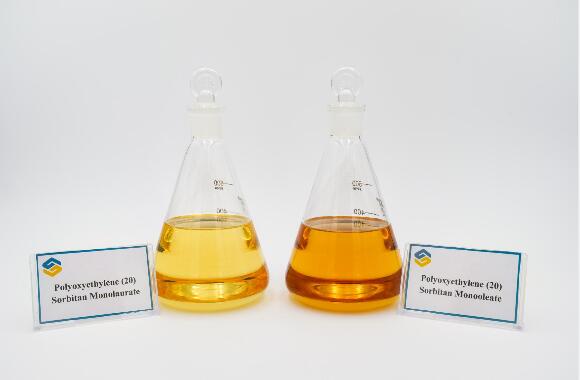Polysorbate 20 and Polysorbate 80 Used in Pharmaceuticals
(2022年)https://www.huanachemical.com/products/polysorbate-80/
Sorbitan ester and Polysorbate as nonionic offer many advantages over ionic surfactants including increase stability, enhance flexibility and provide wider compatibility. They are stable in mild acids, alkalis and electrolytes and do not react with ionic ingredients or actives. They are used as emulsifiers, foamers, defoamers, dispersants, lubricants, solubilizers, stabilizers, viscosifiers, diluents, wetting agents etc.
1. What are polysorbate 20 and polysorbate 80?
Polyoxyethylene (20) sorbitan monolaurate (aka. polysorbate 20) and polyoxyethylene (20) sorbitan monooleate (aka. Polysorbate 80) derived from sorbitan monolaurate and sorbitan monooleate through fatty acids esterification.
They are lipophilic nonionic surfactants that can be used in pharmaceutical excipients formulations to prevent protein denaturation, aggregation, surface absorption and flocculation during melting process.
2. The characteristics of polysorbates
As a protein stabilizer, polysorbates can be degraded through oxidation and hydrolysis pathways, where the hydrolysis pathway is chemically induced or enzymatically catalyzed. Polysorbate 20 uses and polysorbate 80 uses are normally protein stabilizers in most commercial therapeutic protein formulations. This is because of the following characteristics of polysorbates:
(1) Biocompatibility;
(2) Low toxicity;
(3) Effective protein stabilization.
Even at low concentrations, polysorbate 20 and polysorbate 80 can still have relatively high hydrophilic lipophilic balance (HLB) values and low critical micelle concentration (CMC) with sufficient protein stability.
It is generally believed that polysorbate 20 and polysorbate 80 mainly stabilize proteins through interfacial competition. The surface activity of polysorbate 20 and polysorbate 80 is much higher than that of typical therapeutic proteins (such as monoclonal antibodies (mAbs)). Therefore, as for polysorbate 20 and polysorbate 80, they can competitively block the interface and inhibit the adsorption of proteins to gas and liquid interface. Moreover, polysorbate 20 and polysorbate 80 can also stabilize proteins through direct interaction, thereby enhances stability of proteins. As therapeutic proteins may merge through hydrophobic plaques to form aggregates, polysorbates can interact with protein through hydrophobic interactions to prevent protein aggregation and further aggregation unfolding.

- このできごとのURL:



コメント